

Greymouth
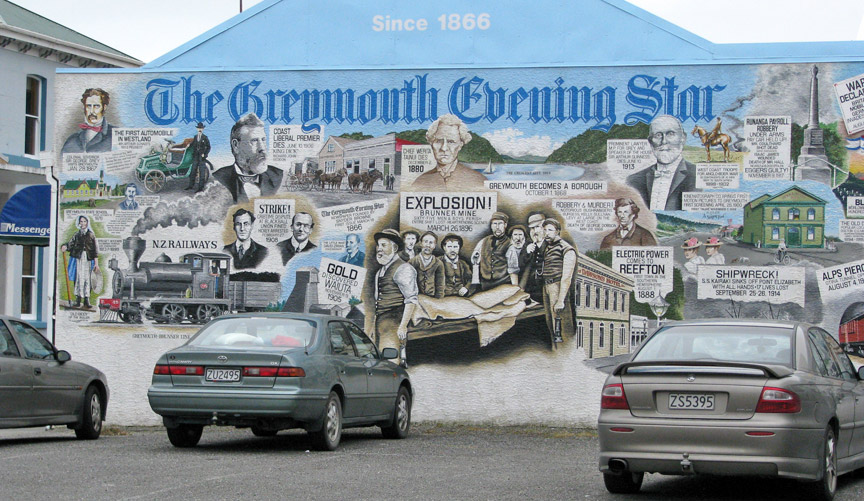
Greymouth
Greymouth is the largest town in the West Coast region on the South Island of New Zealand, and the seat of the Grey District Council. The population of the whole Grey District is 13,650, which accounts for 42% of the West Coast's inhabitants. The Greymouth urban area had an estimated population of 9,920 (June 2008 estimates). The District Council expects growth of 1.5% per year between 2006 and 2016.
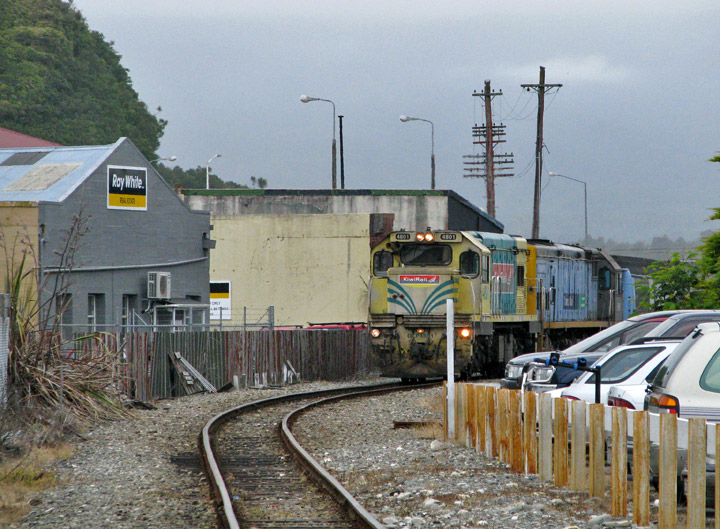
The town is located at the mouth of the Grey River, on a narrow coastal plain
close to the foot of the Southern Alps. In clear weather, Aoraki/Mount Cook can
be clearly seen to the south from near the town. The mouth of the river divides
the town into three areas: Blaketown, close to the river's mouth on the south
bank; Karoro, to the southeast, separated from Blaketown by a series of small
estuarine lakes; and Cobden, formerly a separate town, on the river's north
bank.
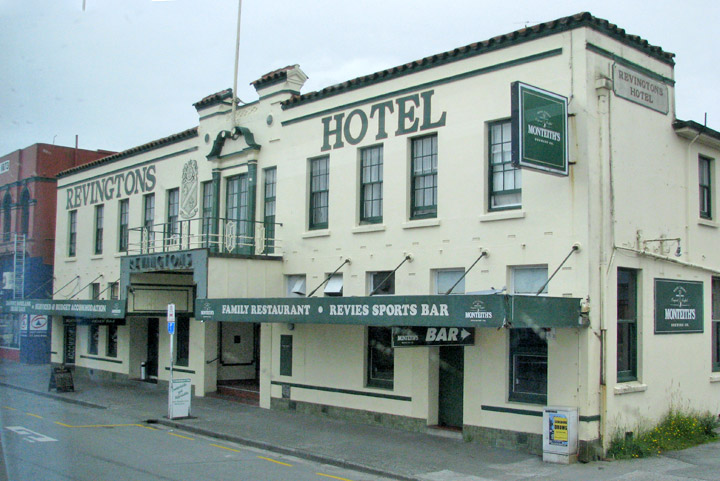
Revingtons Hotel
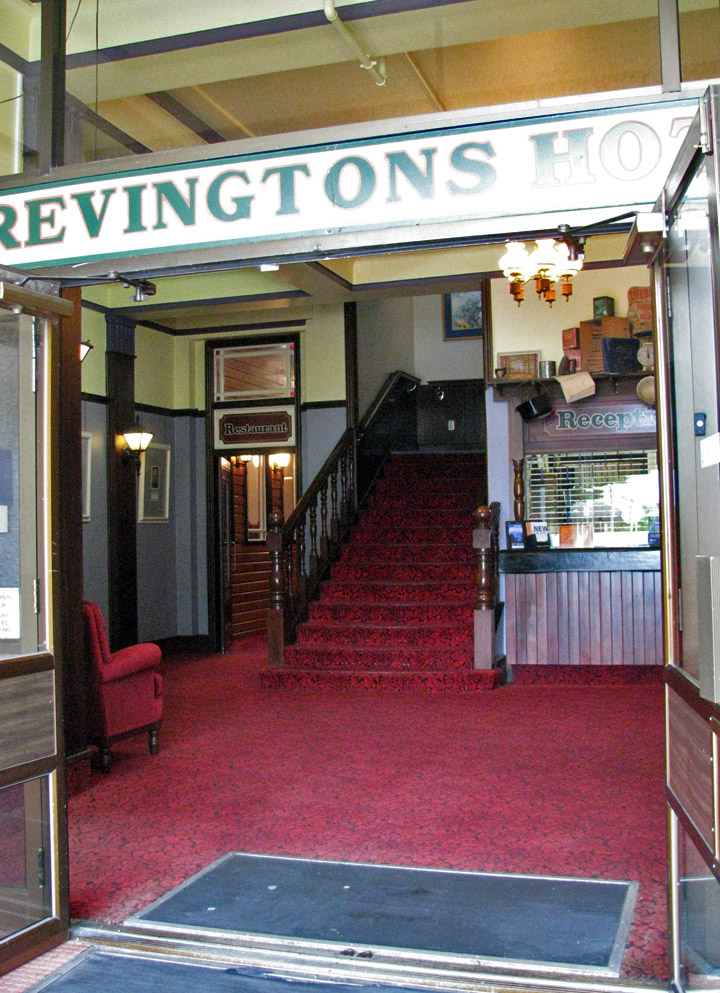
Greymouth is on State Highway 6, which connects it with Hokitika in the south
and Westport in the north. It also stands at the terminus of State Highway 7,
which runs through Dobson and Reefton, eventually reaching North Canterbury and
its junction with State Highway 1 at Waipara (55km north of Christchurch) via
Lewis Pass. The town is also the western terminus of the Midland line from
Christchurch. Large coal trains often operate from Greymouth on this line to
Christchurch. The famous TranzAlpine train also terminates and begins in
Greymouth.
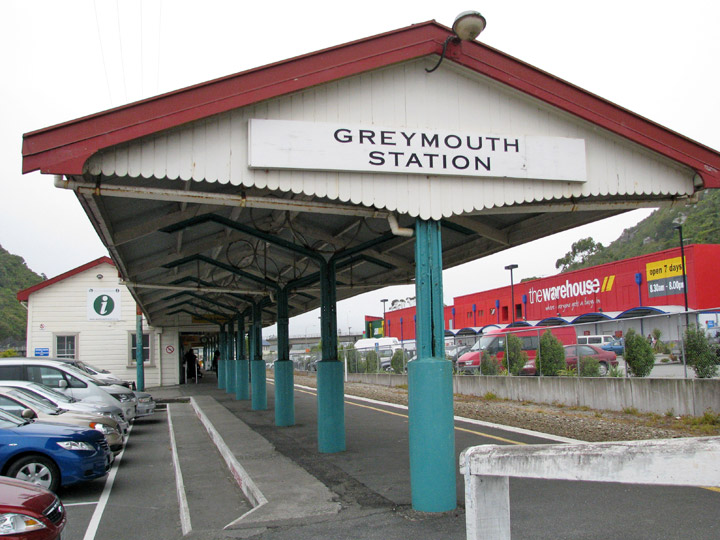
Greymouth station
Photos of the TranzAlpine railroad
Māori had lived in Greymouth for considerable time before European settlement, and called the area Mawhera (for 'wide spread river mouth', still an alternative name for the Grey River). The first European to visit the site of what is now Greymouth was Thomas Brunner in 1846. Brunner discovered coal in the Grey valley, and several places in the region (notably the town of Brunner and Lake Brunner) bear his name. Brunner himself named the Grey River after prominent 19th century New Zealand politician Sir George Grey. Together with gold, coal mining was a major impetus in the town's early European history.
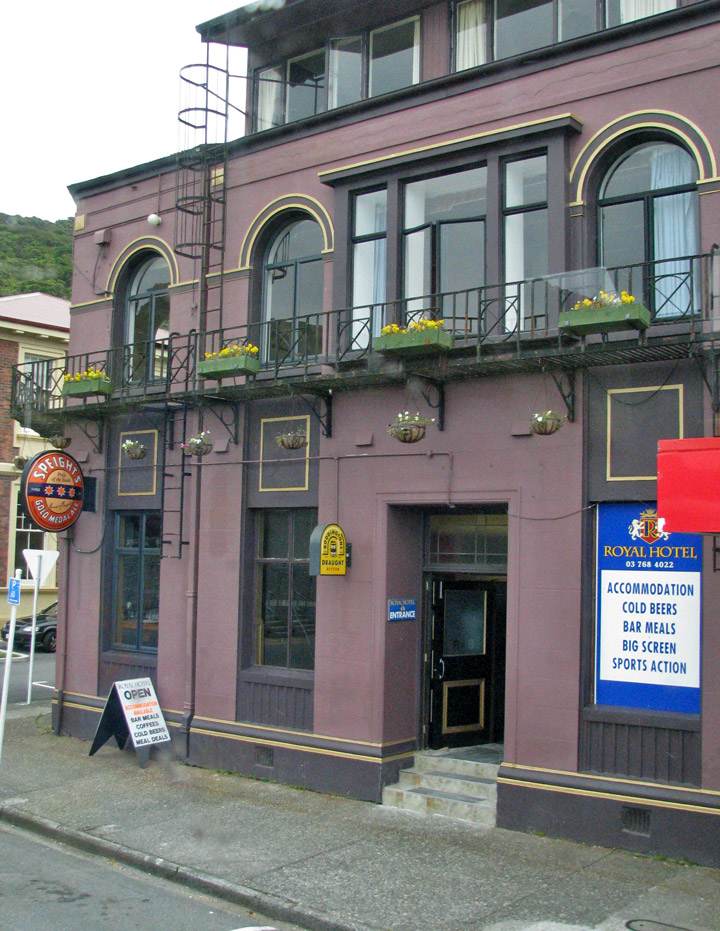
Royal Hotel
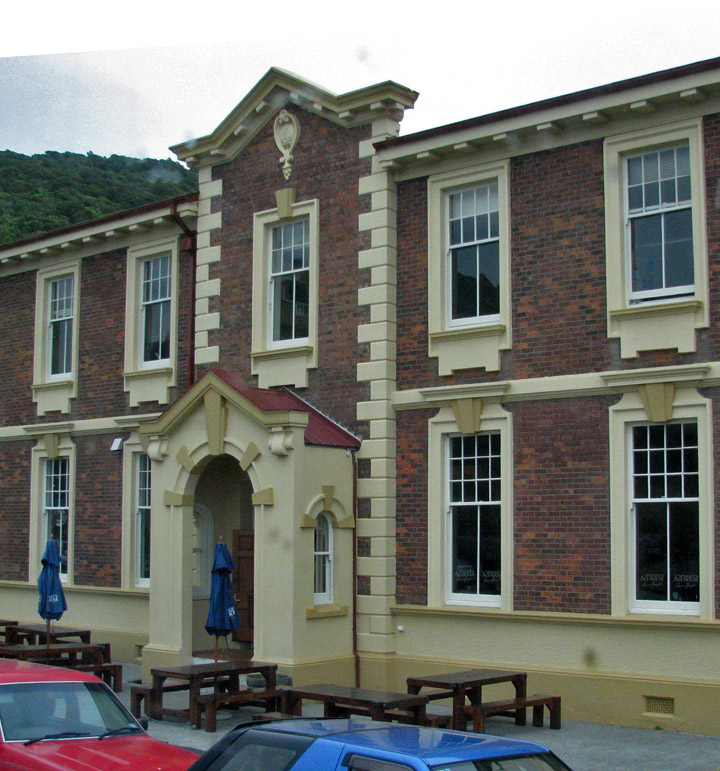
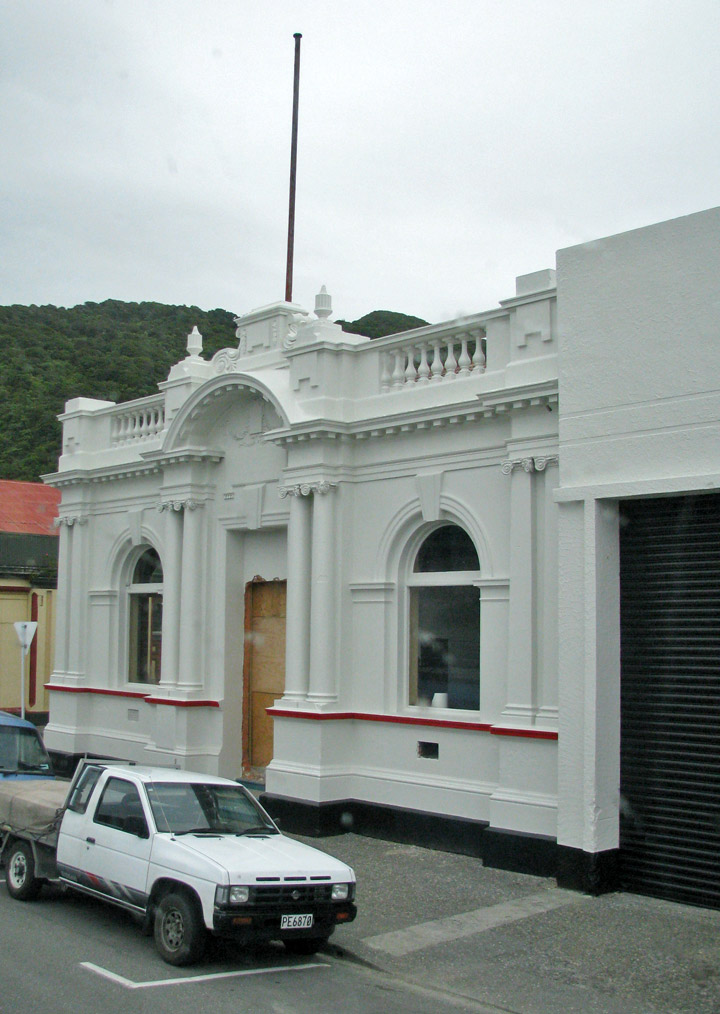

Greymouth has a history of coal and gold mining. When the mining industry
started to decline, forestry became a new staple industry. Fishing has long been
important to the town, despite the fact that the entrance to the Grey River has
two notoriously dangerous sandbars – an inner and outer bar.r.
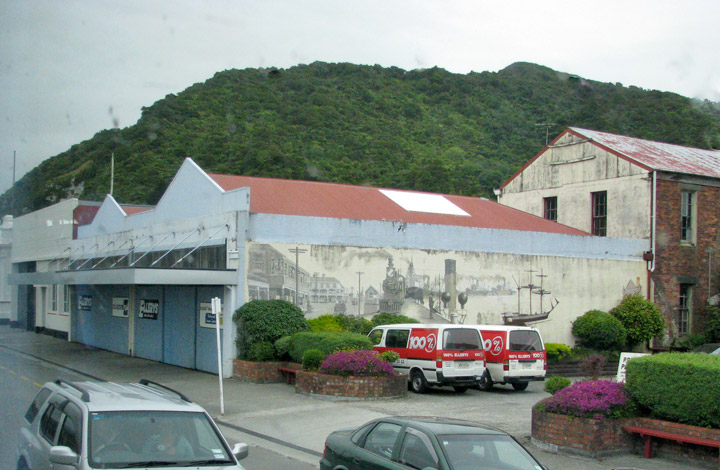
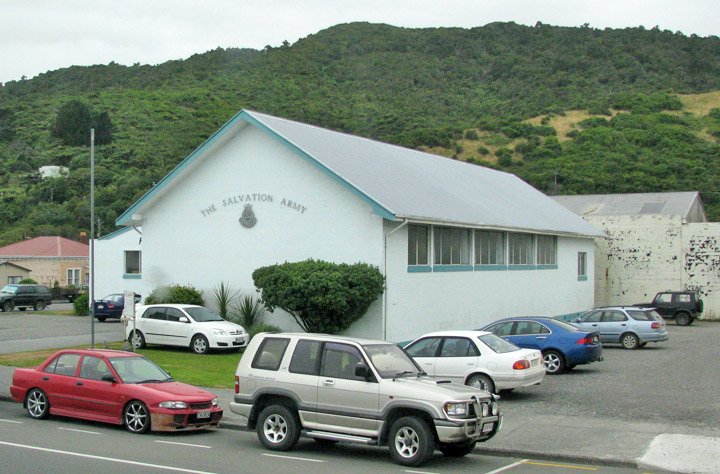
The Salvation Army
Greymouth also has an historic World War II gun emplacement at Cobden. The Grey District Council destroyed part of this site, without consultation, in 2007 to make way for a sewer line.
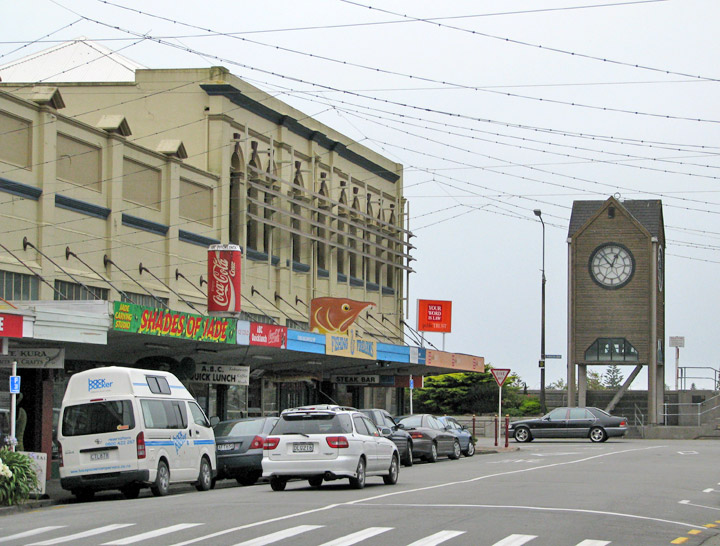
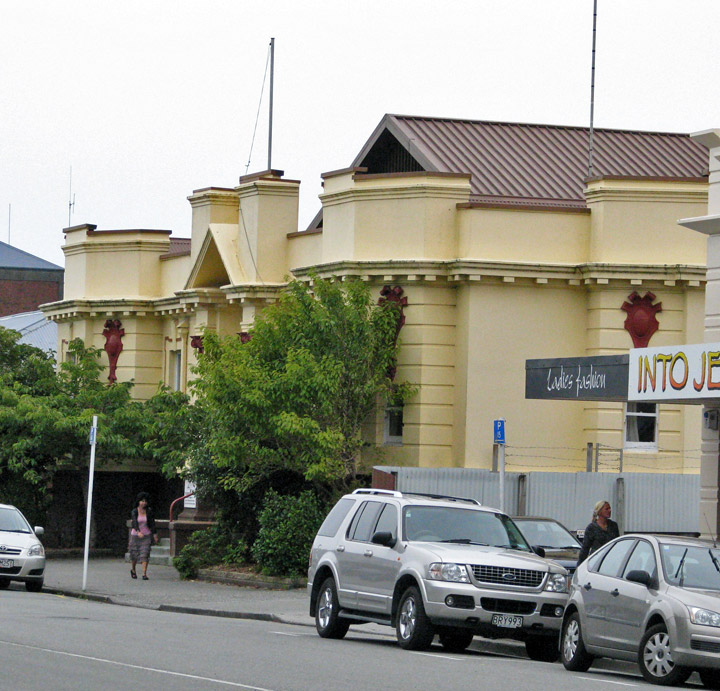
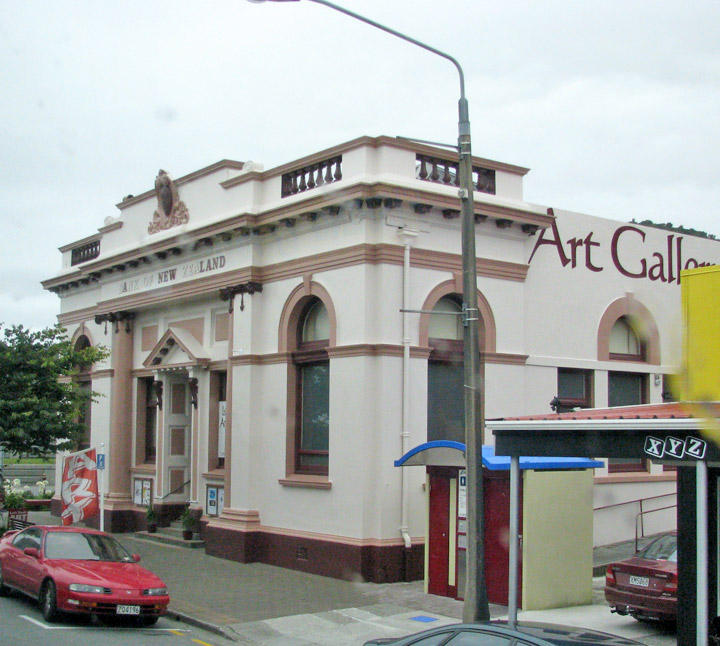
On 10 March 2005, a major tornado, which started as a waterspout, made landfall
in Blaketown, a suburb of Greymouth. It quickly moved through the town passing
just south of the main town centre. The tornado was one of the largest reported
in recent history in the West Coast region and caused millions of dollars in
damage and injured several people.
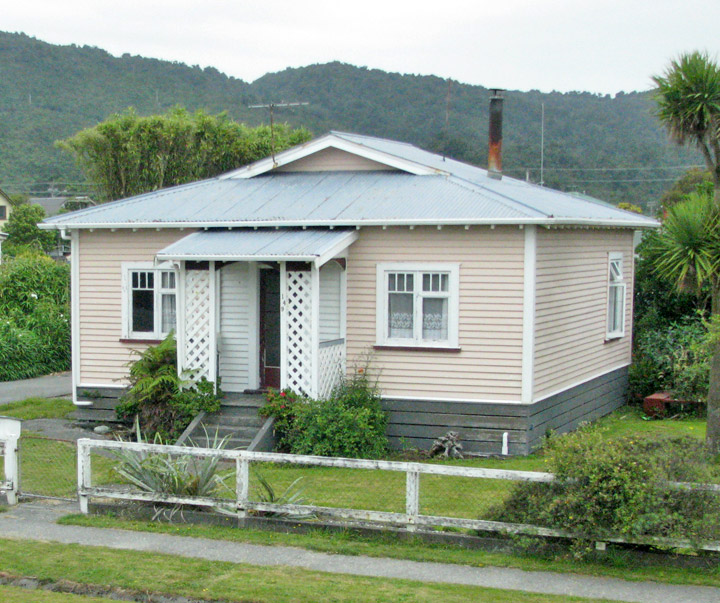
typical residence
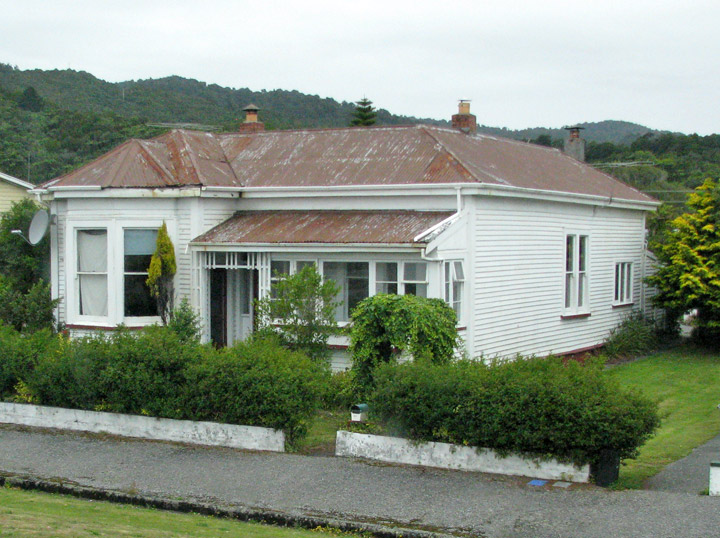
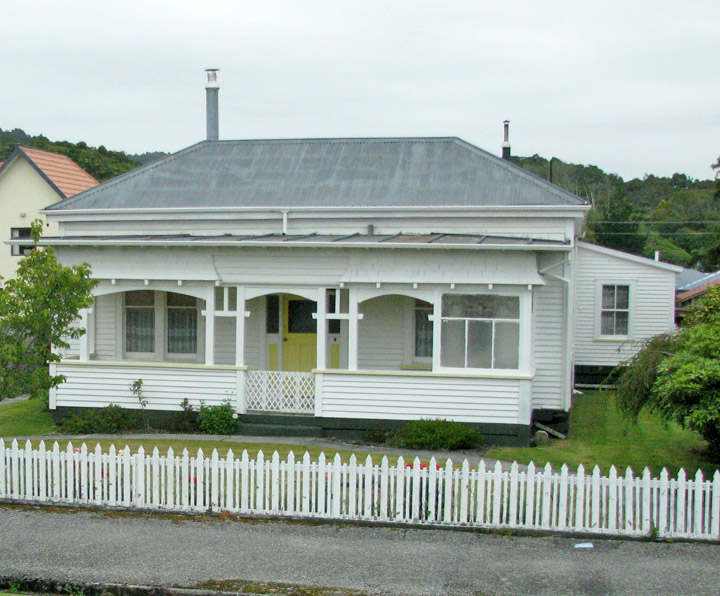
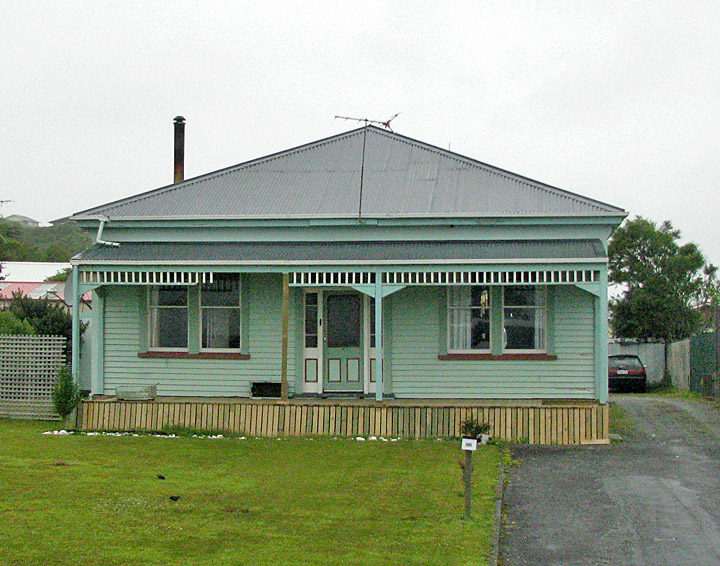

Hokitika
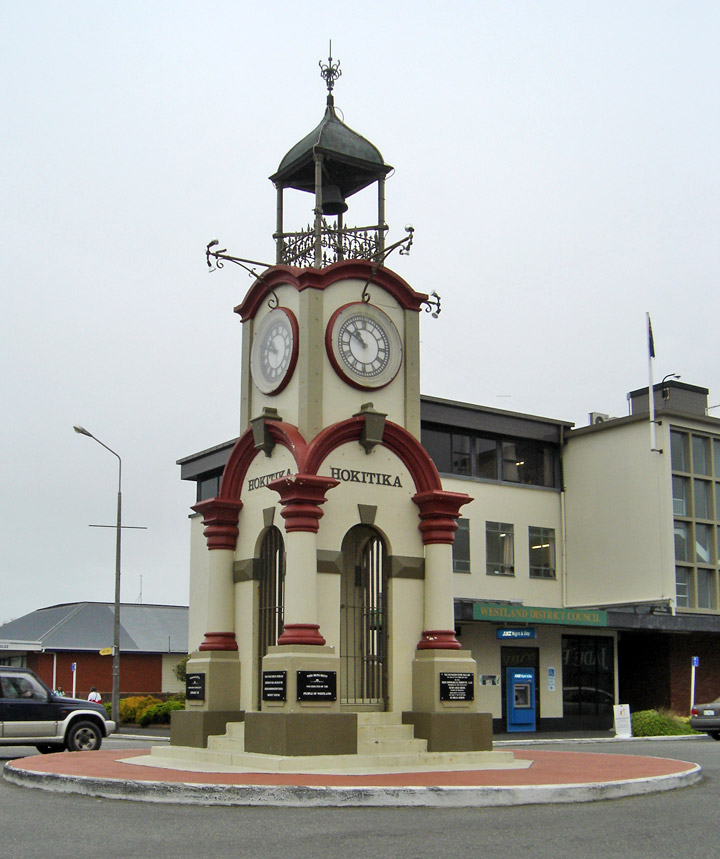
Hokitika
Hokitika is a township on the West Coast of New Zealand's South Island, 40 kilometers (25 mi) south of Greymouth, and close to the mouth of the Hokitika River. According to the 2006 census, the usually resident population of the Hokitika urban area was 3,078.
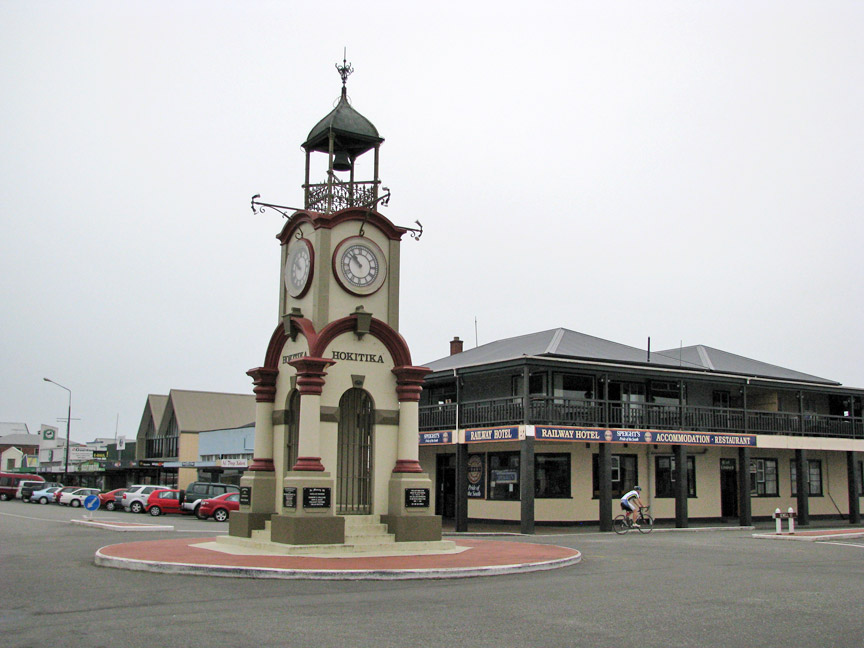
Railway Hotel
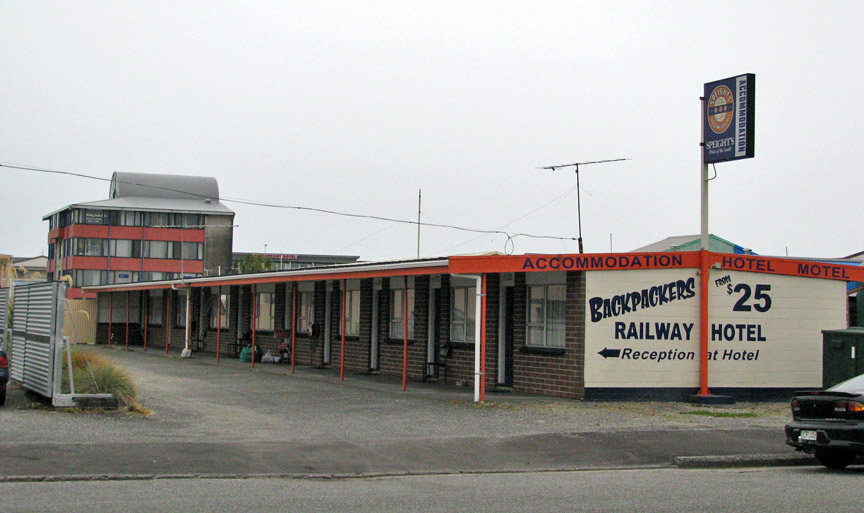
backpacker's wing
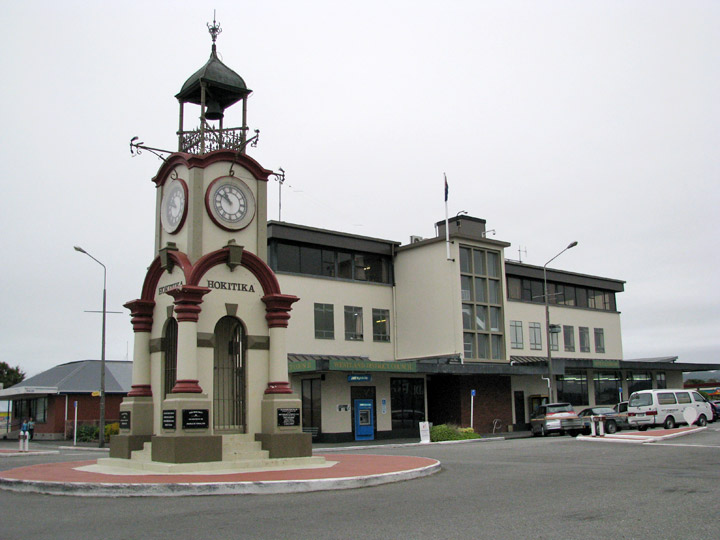
Founded on gold mining in 1864, it was a centre of the West Coast goldrush. By
late 1866 it was one of the country's most populous centers. It became the
capital of the short-lived Westland Province from 1873 until the abolition of
provinces in 1876.
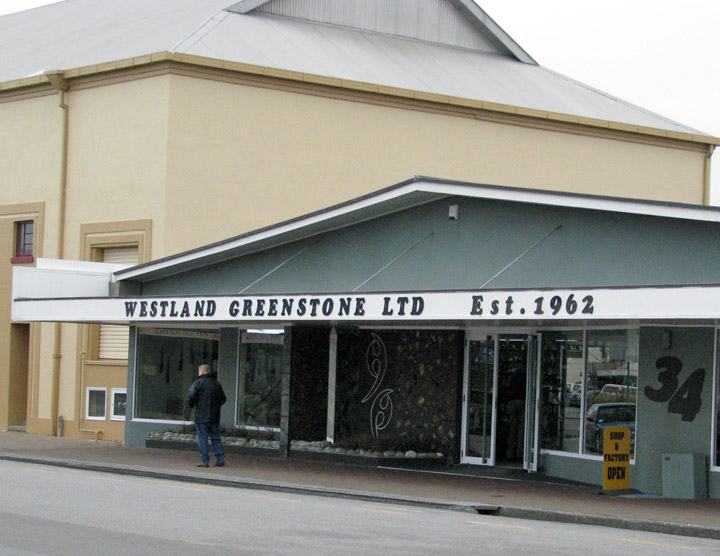
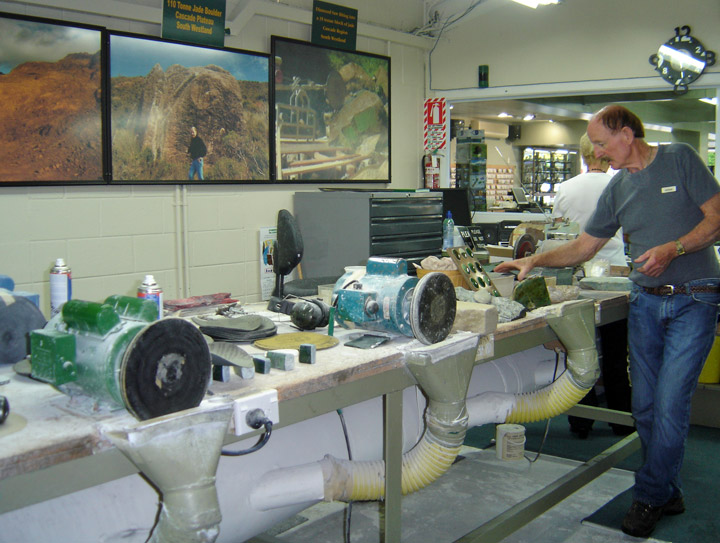
greenstone factory
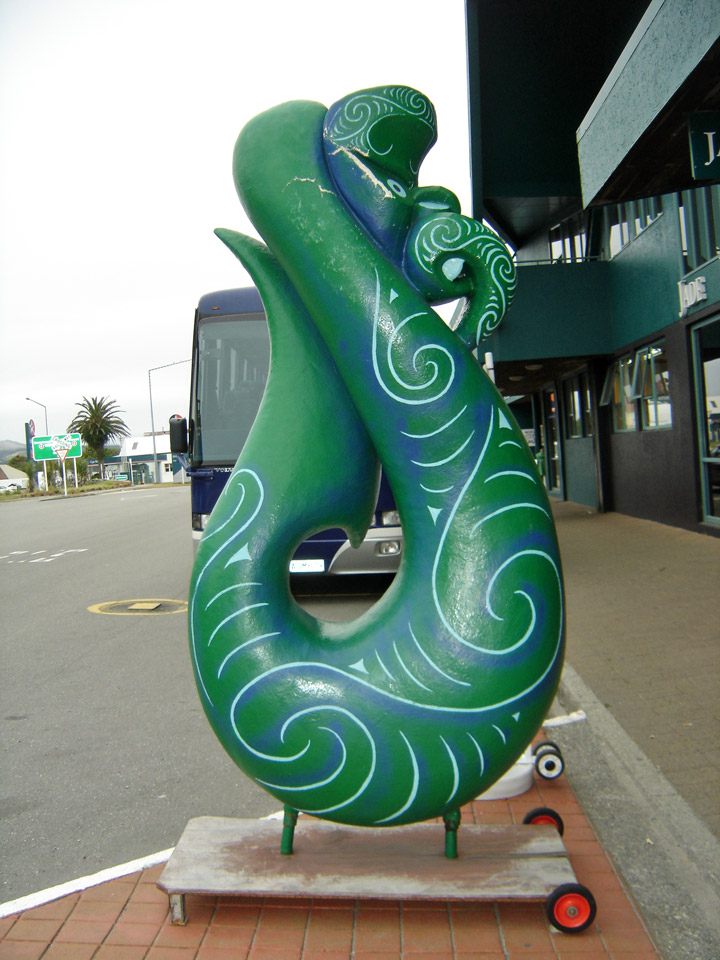
The population has declined greatly since that time but the population of the Westland District is now on the rise thanks to "lifestyle inhabitants"
Text from Wikipedia
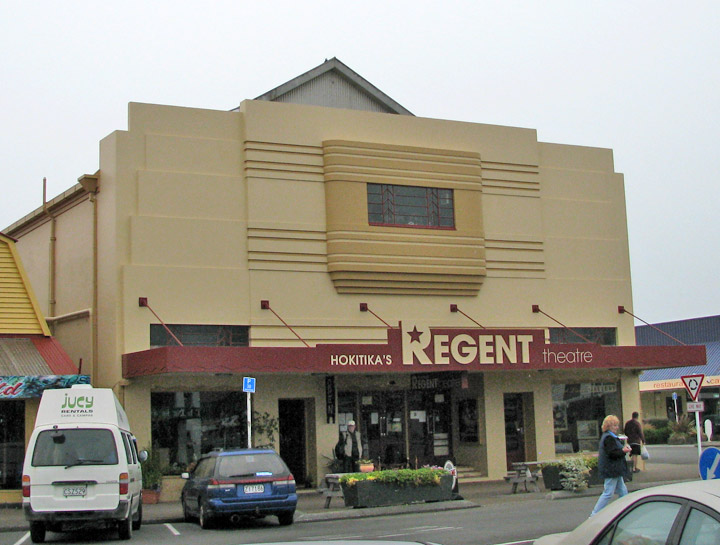
theater

catholic church
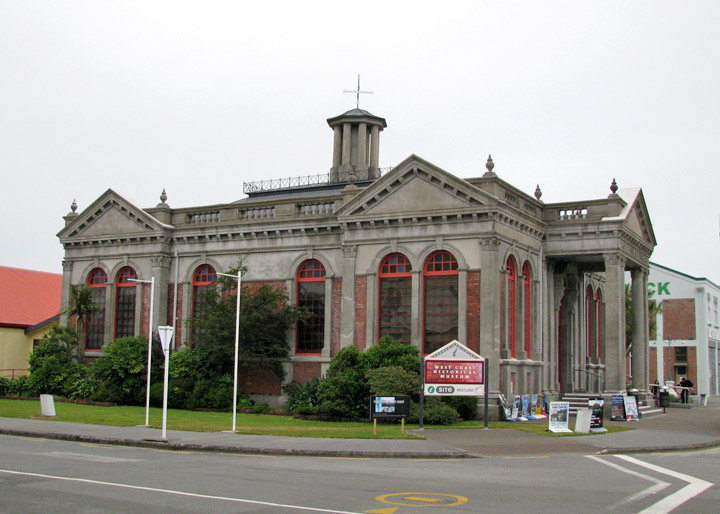
library

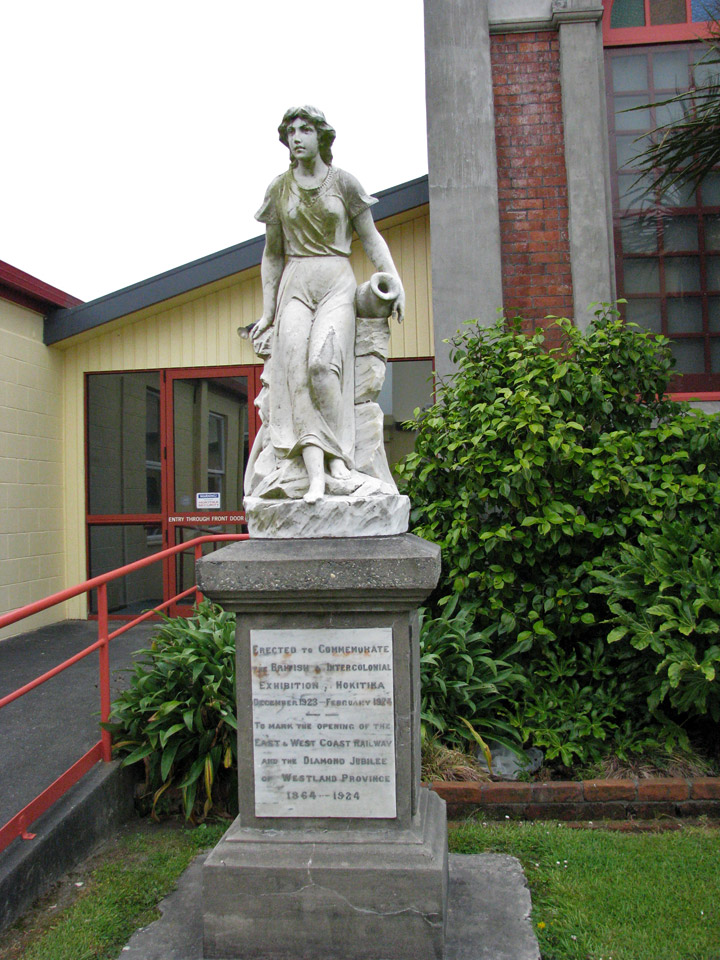
Westland Province memorial